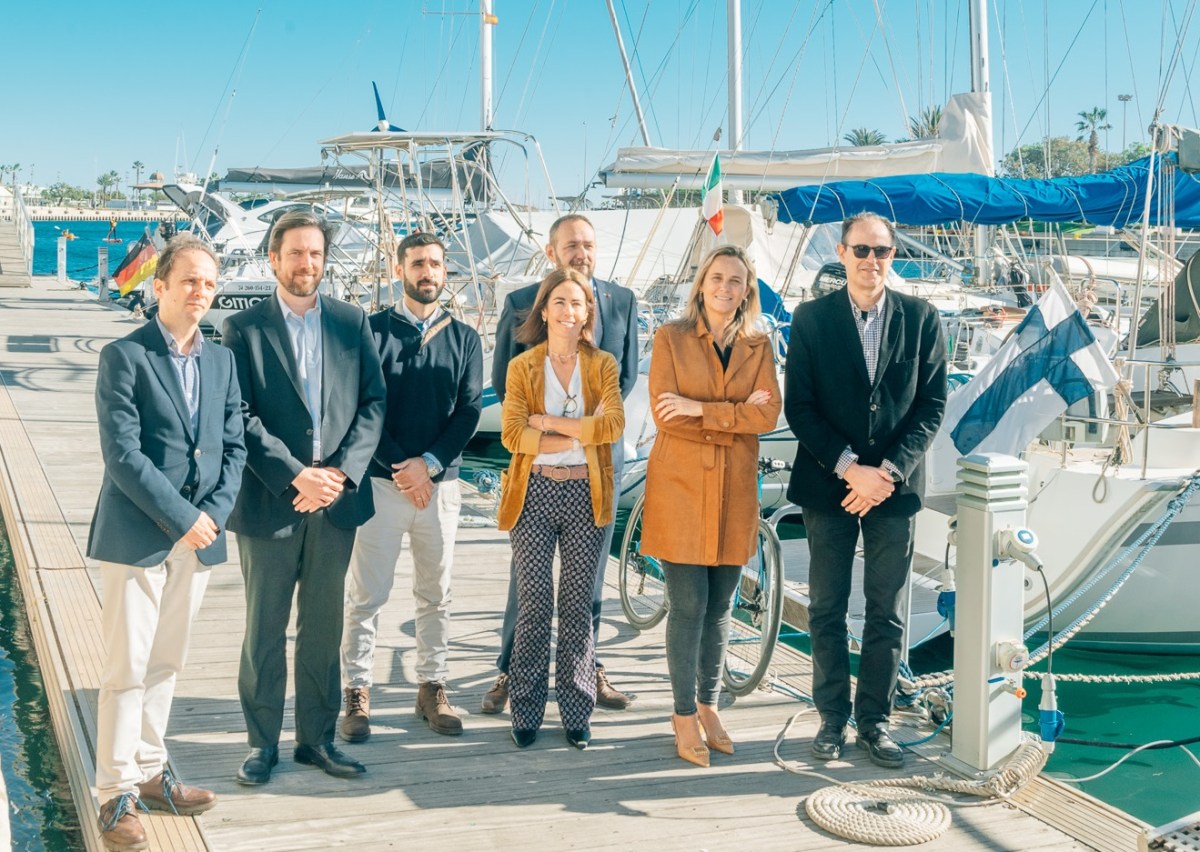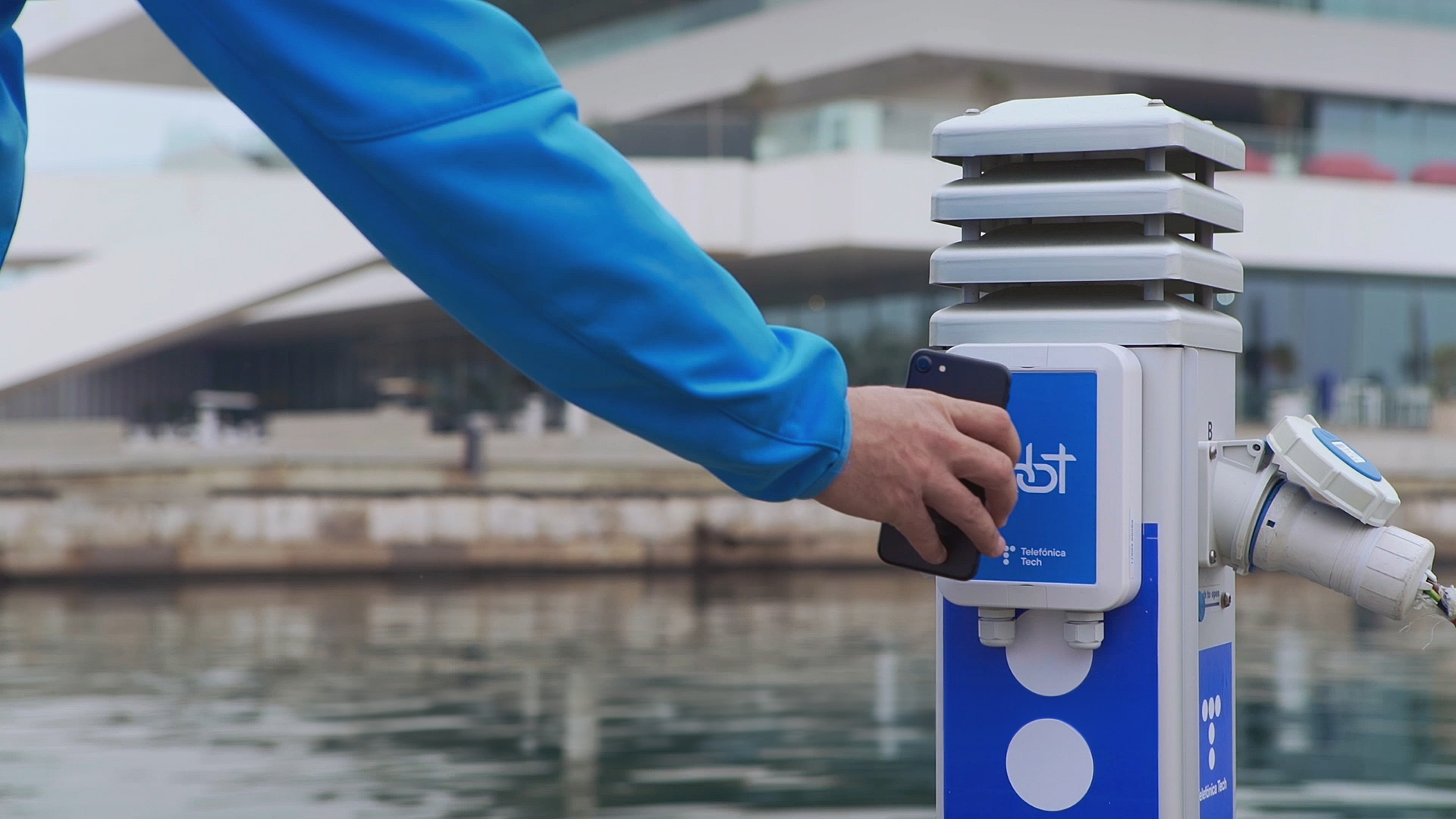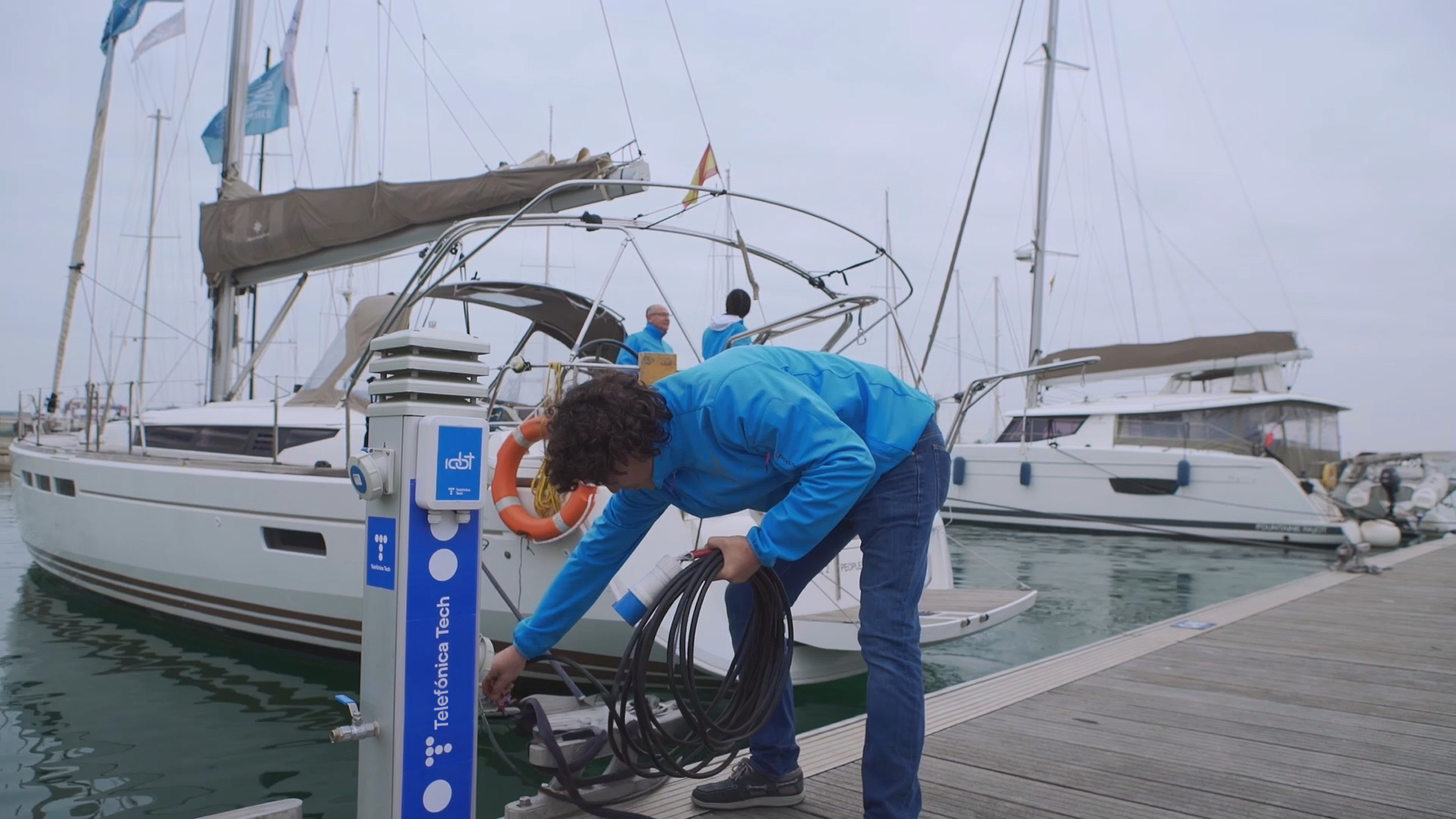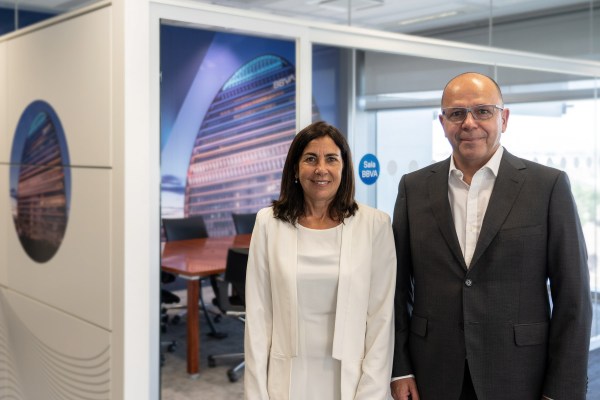La Marina de Valencia is taking another step forward in its goal of becoming a port 4.0 thanks to the transformation of the mooring posts into smart points carried out by Telefónica Tech. The technology company has completed the digitalisation of the 18 electricity and water supply points for the boats on the Q and S pontoons, achieving important operational and environmental benefits and promoting a more responsible consumption of resources. Among them, the digitisation of these towers has achieved a 100% reduction in freshwater leaks at this location.
The presentation of the results of this pilot project, pioneering due to the confluence of numerous technologies, took place today in Valencia and was attended by the Councillor for Tourism, Innovation and Investment Attraction of the Valencia City Council, Paula Llobet; as well as Alberto Sempere, Director of Services, Innovation and Partnerships at Telefónica Tech; and José Torres, Technical Manager of the Innovation and Laboratory team at Telefónica Tech.
The Valencia City Council has relied on the knowledge and experience of Telefónica Tech to continue advancing in the commitment that technological innovation is at the service of real challenges that the city must solve. The city council has assured that projects such as the one presented today allow the objectives of the city’s Digital Agenda to be demonstrated in a concrete way, taking advantage of urban spaces to test and try out technological solutions that respond to specific needs and that can also be transferred and scalable to any other urban environment. And they added that in the context of a more sustainable city, the integration of technologies that make it possible to identify water leaks or inconsistent energy consumption and in turn be able to act remotely for analysis and even act on them efficiently is undoubtedly a step forward from knowledge management to action.
The Councillor for Tourism, Innovation and Investment Attraction, Paula Llobet, explained that “projects like the one presented this morning are a new example of the firm attitude that Valencia City Council has in its commitment to the development of innovation and technology through public-private collaboration. It also shows that we can integrate innovative technologies to be more sustainable, leading to direct savings in the reduction or total elimination of water leaks in an intelligent way. A practical example that allows us to visualise how far we can go as a city. The key is to promote public-private cooperation in the major transitions that we need to address, relying on technology to be more sustainable and solving real problems of our neighbours”.
Alberto Sempere, Director of Services, Innovation and Partnerships at Telefónica Tech, said: “The IDoT technology, developed by our innovation team, has the capacity to completely digitise an existing supply turret, which costs ports up to twenty times less than if a new one had to be installed. IDoT’s technological capacity has contributed to making the port’s Q and S pontoons safer, more efficient and more environmentally friendly by allowing the user to detect any anomaly in consumption in real time and be able to solve it immediately”.
A secure and sustainable digital project
Telefónica Tech has provided intelligence to the existing supply towers on the Q and S pontoons by applying its IDoT (Identity of Things) solution, which provides advanced analytical and security capabilities by encompassing different technologies such as 5G connectivity, cybersecurity to encrypt device information, cloud computing, digital certification of connected devices to ensure that they are only operated by authorised users and their traceability through blockchain to guarantee the immutability of the data collected.
The digitalisation project of the mooring posts developed by Telefónica Tech for La Marina de Valencia enables users to link their smartphones to the supply points to have full control of their boats in real time via an app.
Remote access to the turrets allows users to manage their consumption at all times, being able to act directly on the solenoid valve, which allows water to flow, or on the relay, which activates the electricity supply, as well as receiving alerts in the event of changes in the supply profiles and early detection of possible irregularities (from leaks to possible fraudulent use of the infrastructure), managing to completely eliminate freshwater losses by having the ability to open or close the supply at any time and from anywhere.
The analysis of water leaks in the turrets is essential to ensure the safety of operations and improve the management of resources in port environments. According to data provided by Consorcio Valencia 2007, the managing body of La Marina de Valencia, the Q and S pontoon areas registered an average loss of 12,000 litres of water per month before the digitalisation of their mooring posts. Losses which the organisation quantifies at more than eight million litres per year, equivalent to four Olympic swimming pools, if the entire port is considered.
The telemetry generated by the towers also makes it possible to detect possible operational problems in the towers, as well as to carry out preventive maintenance efficiently. In addition, a direct communication channel has been created with the users of the service, which will allow them to send weather alerts or warnings of interest related to the port or alerts related to their vessels (loss of supply, anomalous consumption, possible accidental disconnection, etc.).
The digitalisation of the mooring posts also makes it easier for the user to reserve them by being able to do so via the mobile application and to carry out the manoeuvre autonomously, without the need for a port operator to physically go to the site to carry out all kinds of checks and consumption measurements.
The improvement measures implemented and the modernisation of the turrets located on the Q and S pontoons of La Marina de Valencia have meant an important advance in the quality of the service offered and in terms of efficiency. For this reason, all the knowledge acquired in the project has been shared in a Living Lab created so that citizens and organisations can access the public data on the state of the port and even integrate it into third-party platforms to design other value-added services.











